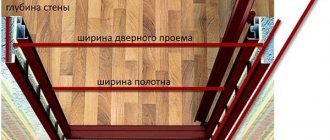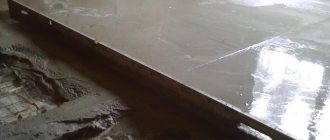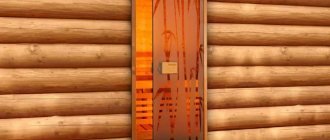Wooden doors are a really beautiful and environmentally friendly thing. Unfortunately, even though Russia is rich in timber, woodwork is not cheap these days. But in addition to manufacturing, you need to hang hinges with a lock on the door, polish it, and then install it. The price is still rising. Is it possible to save money by covering the doors with stain and varnish at home, without poisoning either yourself or your neighbors? Of course it is possible, and I will now tell you how to do it.
@amazonaws.com
Why varnish woodwork?
Many, looking at a wooden door, are perplexed - why spoil the natural beauty with stains and varnishes? Yes, this is an argument - the texture of the wood is very beautiful even without any impregnation. But, firstly , over time, the same pine withers without treatment and the difference in texture, especially on glued door panels, begins to be very noticeable. This leads to the answer: why do they use stain - to even out the color scheme of the wood.
@stroirem.net
Secondly , deep impregnation stain, as a rule, is an antiseptic, and the likelihood of fungus appearing after treatment is significantly reduced.
And thirdly , with proper processing, the texture of wood can be very effectively emphasized with the help of stain.
As for the varnish, in addition to protection from moisture and ultraviolet radiation, it has good decorative properties. If you don’t want the door to shine after varnishing, like a cat’s eyes in the dark, then matte varnish will suit you.
How to create an antique effect
There is a simple way to create a worn effect in antique-style interiors. In this case, a dark brown tone of varnish is used, after drying the door is rubbed with wax. And a varnish coating of a lighter shade is applied on top. Then you need to clean off the wax, sand the canvas and secure the created effect with stain. Some craftsmen use a blowtorch for this result to achieve relief and dark tones on the door. Then the canvas is also sanded and varnished.
As you can see, varnishing a wooden door is not at all difficult. The most important thing is to choose the right material, choose products from reliable manufacturers and properly prepare for the work. The result is a flawless refinish and brings life back to your old door.
Voted over 425 times, average rating 4.2
Comments
Unfortunately, there are no comments or reviews yet, but you can leave your...
Add a comment Cancel reply
We recommend reading
Finishing and repairs Laying anti-slip coating on the steps of the porch - types of flooring and their characteristics Equipping the exit from the premises with a porch is carried out for ...
Finishing and repair 21 photos of a porch paved with tiles - stages of work, how to choose the right tile and lay it Extend the service life of the porch, improve its decorative qualities...
Finishing and repair How is laminate installed in doorways? The process of laying laminated panels on the floor does not seem very...
Finishing and repair The use of molding for decorating a paneled door leaf The moving part of the door block - the leaf - can be assembled as ...
What materials are suitable
Let's start from the fact that you don't have a spray gun or a workshop. But for your neighbors, and for you too, the smell of white spirit or 646 is not at all sweet or pleasant. Then we can safely cross out all these materials with caustic solvents.
What do we have left? Deep penetration alcohol stain and a whole line of acrylic materials. And this, my friends, is not so little. Let's start with the advantages of acrylic :
- the possibility of using water as a solvent;
- non-toxic for humans and animals;
- undemanding to the room regarding dust;
- a spray gun is not required for work;
- acrylic varnish, unlike polyurethane or nitracellulose, practically does not change the natural color of the wood;
- acrylic film is elastic and durable.
@tbmmarket.ru
As for the minuses , there are few of them:
- The time for complete drying of the layer at +20 degrees can be more than a day. Do not be fooled by the fact that the whitish stains on the surface of the wood have disappeared - the varnish may stick for another two to three days.
- The operating temperature of acrylic materials is not lower than +5 degrees. Otherwise, they dry for a long time and painfully. And since water serves as a solvent for acrylic, you can end up with an ice crust on the surface of the wood instead of a layer of varnish.
- Good acrylic varnish from Tikkurila, Eskaro or Zip Guard , like any worthwhile thing, is quite expensive. And take something domestic from paint and varnish materials - unless you are varnishing a door not for yourself.
The only thing you can save on is to use an alcohol stain for the first layer of tinting. It really costs a penny, but it just eats away tightly. But it can only be applied to bare wood - no preliminary primers! And this stain does not like putty; the stains can be very noticeable. Therefore, pay special attention to pre-sanding the door, removing all excess putty and wood glue from it.
Choosing the right varnish
Alkyd varnish
Have you decided to use varnish? You made the right choice. All that remains is to correctly select the necessary material to process your doors. Varnish compositions are divided into several types:
- Alkyd compounds are an excellent waterproof, solvent-based option. After application it creates a light yellow tint. To speed up drying, adding a hardener is allowed. This combination will increase the hardness and moisture resistance of the coating. Complete drying time after application is twenty-four hours.
- Nitrovarnish compositions - capable of drying quite quickly, are made on the basis of solvents. Very toxic material, easy to use with a spray gun.
- Polyurethane varnish composition is highly durable and can give the wood a dark color. Before applying it, it is recommended to treat the surface with primer compounds.
- Acrylic varnish is safe from an environmental point of view, since it contains a water base. This type of varnish is odorless, but is not as durable as other compositions.
Preparatory stage
Let's make a reservation right away - we are now talking about carpentry made from inexpensive types of wood - pine, alder, spruce. If you have enough money for doors made of oak or ash, and you are not a wood painter, refuse to varnish yourself, do not spoil the product. Hire a professional, he will polish everything as it should. Do not touch products with decorative veneer - they can be damaged irrevocably.
@pinterest.ru
First of all, you need to find a table that is large enough, durable, and at a comfortable height. If it is too low, the back from the position bent over it will soon make itself known to you. A clean, soft, thick rag is spread on the table, and a door is placed on top to avoid dents and damage to it. This is especially true for joinery made of spruce, pine or alder.
If the door has glass , and you can’t remove them (or are reluctant), they are covered with masking tape. Be careful that the tape does not cover the wood; all overlaps are carefully trimmed with a utility knife.
To identify dents, cracks and other flaws, arrange several light sources in the room, and so that they illuminate the door obliquely, and not strictly vertically. Examine the surface and panels of the door from different angles, and eliminate flaws before starting sanding. There are three main ways to do this:
- using a mixture of sawdust and glue;
- choosing a putty that matches the color scheme;
- or by caulking a crack or hole with a piece of wood placed on glue.
Attention! Putty under varnish can change color greatly. Check on some block to see how it will look. By the way, after it dries, you can (and should) finish drawing the wood texture on it with a colored pencil - it looks much more natural. These arts are practiced after the first polishing of the canvas.
It is best to putty, sand and varnish the door frame This is simpler, and you can immediately check the color of its ends and casing. There is no particular problem with this - today boxes are assembled mainly with self-tapping screws, and not with dowels or nails, as before.
How to prepare a door
Old paint needs to be removed
If you decide to renew a door coated with varnish or other protective material, you should first prepare it.
- It is not recommended to apply a fresh coating over old varnish or paint, so the old layer must be removed in advance. The better you do this, the more beautiful your door will look when you varnish it. It is best to use a hair dryer or sandpaper.
- Now let's move on to the second preparatory stage - grinding the door surface. This is necessary in order to remove all defects that appeared during primary processing. This procedure is performed using fine sandpaper. To carry out sanding work, you need to be patient, this will help you achieve good results.
- If paint is used, the procedure for leveling with sandpaper could be replaced with conventional puttying of the surface. Painting with varnish involves the use of putty, but in small quantities to seal knotty areas and deep damage. It is very important to match the color of the putty to the color of the wood from which your door is made.
Prepare the door
Note!
Never use removers designed for metal work. as they quickly absorb into the wood, coloring it. For each type of coating, the appropriate type of wash is selected.
Wood putty
The next preparatory stage is treating the door surface with a special impregnating compound, which will serve as protection against mold and bark beetles. After the impregnation has dried, apply the primer mixture using a roller or brush. It will create conditions for better adhesion of the surface to the varnish and slightly reduce its consumption. When carrying out all activities, it is necessary to make a selection of materials on the same main component so that the effect of delamination does not appear. We advise you to choose all the necessary materials from one manufacturer. When the soil dries, you need to work a little with sandpaper again. Areas of additional cleaning should be additionally coated with a primer mixture. If you have chosen a varnish that will not change the color of the wood, you can use it as a primer after diluting it.
Grinding process
I will assume that you have a grinding machine (vibro or eccentric). A tape machine can also be used, but it leaves streaks on the wood. No need to use fine sandpaper! If this is done, a surface that is too smooth will not absorb the stain well. As a result, it will be easy to tear it off even by accident, and when tinting the door, drips cannot be avoided. P100 grain , or even P80, and grind all the planes with a machine. Then we manually go through the moldings and figari on the panels. Don't forget about the side ends of the door - they are clearly visible.
Only the back sides of the boxes are not puttied or sanded. By the way, don’t forget to varnish them, otherwise they can take moisture from the wall.
Criteria for choosing a paint coating
When choosing a varnish for a door, first of all you need to determine what kind of work it is intended for. For interior doors, interior varnish is suitable. For entrance doors or for rooms with high humidity, a composition for external use will be required. In addition to humidity, it must withstand significant temperature fluctuations.
Matte or glossy finishes are chosen based on their overall interior design style. For example, Provence or Shabby chic styles, based on muted light colors, will certainly require a matte door surface. A Techno or Art Deco style, on the contrary, will simply force the use of glossy surfaces.
Tinting
@familychoicepainting.com
The preparatory stage is the most tedious in the varnishing process. When finished, carefully remove wood dust from the surface of the canvas. Then, from the lower and upper ends, a pair of nails 150-200 mm are driven into the door to a depth sufficient to hold it on the painting trestles (this is for sure, 3-4 centimeters). They are driven in at such a distance that the door on the trestles can be conveniently turned over.
On a note. If you drive in three nails (two on the sides of the lower end, one in the middle of the upper), the trestle door can be turned over without a partner.
Before use, it doesn’t matter whether it’s varnish or stain, they are filtered. This can be done by taking old women's tights and putting them on a container of varnish. I hope there won't be any problems with this.
dish sponge is better suited for these purposes . It is used to rub the stain into the wood and remove excess. Try how it lays down and dries on an unnecessary block, then move on to the “finishing” part.
If necessary, apply several layers of stain and wait until it dries completely. Then the door is very carefully sanded with fine (P240) sandpaper and a second layer is applied.
@wikihow.com
Attention! After the last layer of stain, the wood is not sanded; the first layer of varnish is immediately applied to consolidate the result.
Surface varnishing
After opening the jar of the composition, stir it slowly before covering the door with varnish. This condition is important, because only with slow stirring will air bubbles not form. Pour a small amount of the composition into the bath, after securing the door horizontally. With the frame, of course, everything is more complicated, which is why when painting it, the drips are simply sanded off.
To ensure that the transitions between layers are unnoticeable, it is important to apply the varnish quickly. The layers are applied in an overlapping direction and there must be at least 3 of them. Before applying the next layer, you must make sure that the previous layer is completely dry. Varnishes have different drying speeds, so read the instructions to find out how quickly the composition you buy dries.
As for the panels, they are usually varnished with a small brush. Streaks, sagging and stains are removed with sandpaper, with the exception of the top layer. While the coat of varnish is drying, the roller or brush can be stored in a jar of varnish or a tightly wrapped bag.
When varnishing, many craftsmen do not remove the handles, but simply wrap them up, although this action is incorrect. This is explained by the fact that the areas under the handles also need to be covered with impregnation and primer.
So, if you follow the above-mentioned simple tips, varnishing the door will take place without difficulty and in a short time. Perhaps you have questions on the topic or some comments about the article. We are waiting for your comments.
Features of applying stain and varnish
Any wood is suitable for coating with stain: pine, oak, birch. It should be applied generously so that the surface is saturated. After the wood has absorbed the stain, you need to remove the residue. For washing, use a brush and acetone. It is necessary to carry out this procedure until the composition stops being washed off. After this, the door should dry well.
Varnishing is carried out in two stages. After the first layer has been applied, you need to wait for it to dry and remove any roughness and unevenness with sandpaper. After this, it will be necessary to varnish the coating again.
Painting veneered fabric
If your interior doors are made of veneer, then the sanding procedure should be carried out with extreme caution. It is unacceptable to use grinding machines - they can damage the top layer of veneer. The work must be done manually, and it is better to entrust this task to professionals.
It is necessary to carefully select the coating material:
- If the door is completely new and you are simply not satisfied with its color, then you can do without sanding. Just choose the varnish of the desired shade and get to work. If there are small defects, you can simply varnish them and then rub them with polish.
- Doors made of artificial veneer are suitable for painting. But there are some difficulties associated with the fact that such a door has a smooth surface from which paint will roll off. You can use a primer, but in this case the effect of the natural wood structure will not be preserved.
In this case, the paint must be applied in two layers. To paint a veneer door, you should choose water-based paints. If the paint structure is dense, the individual coating pattern will be lost.
Before processing a veneer door, carefully consider and evaluate the scope of the upcoming work. If there is a small flaw in the form of a scratch, you can get by with local painting. If you need to radically change the color, carefully choose the coating. If you change the surface of the outer layer with chemical dyes, the environmental friendliness will be compromised.
If you follow the suggested tips and recommendations, updated interior doors made of solid pine or other wood will become your pride and will enliven the interior of your apartment.
Advantages of stain and varnish
Protective stains differ from classic impregnations. If the door is coated with this composition, it will “breathe”. The coating in this case is resistant to moisture and cracking. There is a large selection of stains on the market. They are suitable for solid wood products:
- pine trees;
- oak;
- spruce and other species.
Some of the stains are transparent. Such solutions emphasize the beauty of wood and protect it from harmful influences. Brushes must be used for application. Read the instructions carefully: some manufacturers suggest applying one layer, while some recommend applying several layers.
It is advisable to coat a door that has been previously painted with clear varnish. In this case, it will be less susceptible to external negative influences and will retain the shine and color of the coating. If you have coated your door with acrylic varnish and notice that there is a whitish tint left, don't worry - it will become transparent after it dries completely.
By choosing a special cold-curing varnish, you can make the coating of a solid pine door glossy or matte.
Which paint to choose?
In order to choose good quality paint, you need to spend a lot of time, as it is not so simple. And many people make mistakes when choosing paint, and therefore are dissatisfied with it in the future.
At first glance, it seems difficult to choose a paint? I went to the store and bought everything, but in reality you need to choose the painting materials well, since sometimes the paint may not be suitable for painting the specific wood from which the door is made.
Door paint called alkyd enamel has become widespread. It is chosen because it has several advantages over other paints. The cost is low and affordable for almost everyone, a wide variety of colors. In addition, it has high strength and lasts for a long time without peeling.
The disadvantage of alkyd enamel is the fact that it has a pungent odor that lasts for about 2 days. Because of this, it is better to do painting work outside.
If painting needs to be done inside a building, then it needs to have good ventilation. You can see options for doors painted with this enamel in the photo.
If persistent odor is a big problem for you, we suggest you use acrylic paint. This paint also has a huge variety of colors, but does not have such a strong smell. However, the resulting layer is not very durable, so you must varnish your doors. The price of such painting is quite high, and as a result you will only get a matte surface.
Why do you need to varnish wood flooring?
Applying a composition of this type to a wooden floor is required due to the whimsical nature of the material itself, which requires additional protection for full and long-term operation. In many ways, opening wood with varnish helps improve technical qualities and protect it from a number of negative influences:
- Water protection. Moisture seeps deep into the wood and over a period of time it evaporates, as a result of which the dimensions of the material partially change. In these cases, the wood begins to dry out, and in the opposite situations, it begins to swell. If there is varnish on the surface of the floor covering, there is no change in the level of humidity inside the material.
- The wood exposed by it increases the resistance of floorboards to mechanical damage, including abrasive loads.
- To remove dirt from the floor surface, you have to spend less effort, since the varnish prevents the absorption of significant amounts of dirt.
- When opened with this composition, it is possible to emphasize the natural pattern of the wood. The top layer will keep the flooring in its original condition and prevent it from wearing out.
- Natural wood is very often damaged by various insects and microorganisms. Varnish reduces this danger to a minimum.
Note! When you open a wooden floor with varnish, its level of strength increases and the likelihood of scratches on its surface is eliminated.











